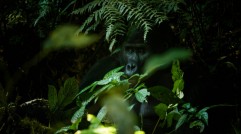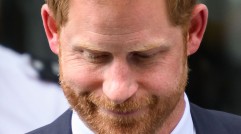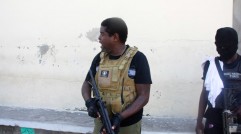Analyze This: El Chapo's 63 Therapy Sessions Reveal That He's Sensitive to Criticism and Much More
Sequential psychological assessments of the world's richest and most notorious drug lord began in 1995 and continued through El Chapo's original stint in prison. Sixty-three therapy sessions ensued, which led to a character profile that reckoned that the Joaquín El Chapo Guzmán was "sensitive to criticism," "fearful of attention," and "egocentric and narcissistic."
The sessions transpired when El Chapo was residing in Module III, Section I, Level A, Room 307, Bed B at Puente Grande prison in Mexico, according to The Daily Beast. The "most ruthless organized crime leader on the face of the earth" may have seemed like a hardened renegade to authorities, but reports from his therapy session suggested that El Chapo's true nature is that of a man who is "introverted with a tendency to be needy."
"Is a subject who presents himself as a being with confidence in himself: egocentric and narcissistic, with a grandiose feeling of his own importance, giving him expectations of special treatment," the official assessment of El Chapo reads in part.
El Chapo's "egodystonic aggression" characterized El Chapo's sensitive nature that was countered by aggressive thoughts and urges, contrary to ideal images he held of himself. He didn't like to see himself as a "bad man;" but when "bad" was done under his command he was easily able to rationalize that sinister side of himself. He was able to assume "the Godfather's" objectivity that divided business from the personal/pleasure. He was able to function as two different people in order to preserve a sense of self. While gaining notoriety, he was able to keep some of himself concealed from the public.
"A fear of being the center of attention," as stated in his analysis's notes; though it seems laughable as the DEA, FBI, CIA, rival cartels and the Mexican military sought him for years while he was tucked away. His "adult anti-social behavior" explains his desire to shy away from the limelight, though notable" and "expansive" leadership qualities edged him back into it.
Gestalt techniques, which are treatments at an individual level "with humanist focus," were recommended for Guzman. Gestalt therapy analyzes feelings and thoughts at particular moments within context of present relationships, straying away from past relationships. With this method of treatment apparently El Chapo had found a great deal of progress, and his time spent in prison was met with ease.
What also eased his time in prison was an "adequate relationship with authority figures," usually to serve his own interests. Evident by his handing off of suitcases filled with cash, which enabled visits from female prisoners, and enabled his eventual escape from prison during January 2001.
El Chapo's inflated sense of self was encouraged by the world, who labeled him dangerous and unrivaled; and encouraged by Forbes, who rated him as a billionaire and one of most powerful people on earth. He was declared to be bigger than Al Capone; Public Enemy No. 1. His power won his gorgeous wife a beauty queen title, and it allowed him to elude the police until he was captured just last month. The Daily Beast suggested that if he isn't extradited, perhaps El Chapo could go back into therapy as it seemed to do him a bit of good.
The Legend of Shorty, a 90-minute British documentary co-directed by British filmmaker Angus MacQueen and Peruvian journalist Guillermo Galdós, is expected to lead to a feature film that will frame him as a Zorro-like hero. Entertainment Weekly conducted a poll on who could best portray drug kingpin, and the choices were Benicio del Toro, Oscar Isaac, Demián Bichir, Diego Luna and Christian Bale. Demián Bichir won.
Subscribe to Latin Post!
Sign up for our free newsletter for the Latest coverage!













